Lake Titicaca is the highest navigable lake in the world and is an essential part of any holiday to Peru. It stretches across the borders of both Peru and Bolivia although more of the lake is located on the Peruvian side. Humboldt Travel directors, Kirsty and Simon, paid a visit to the area on a recent trip.
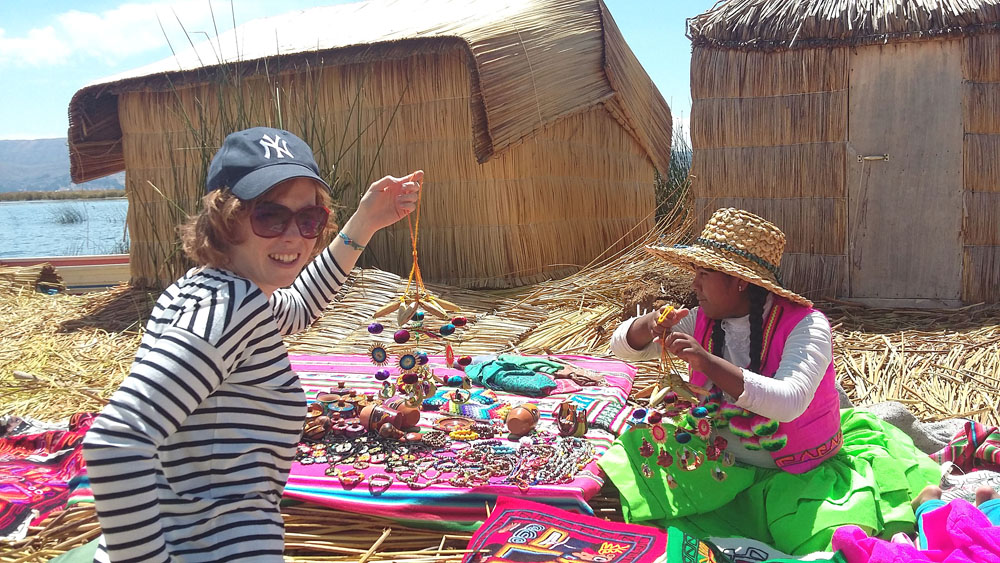
Kirsty admiring the handicrafts of the Lake Titicaca residents.
Puno is the name of the main town on the shores of the lake on the Peruvian side. It’s an uninspiring town of little merit but somewhere you need to get to in order to visit the lake.
Getting to Puno or Lake Titicaca can be done in a number of ways. There are regular buses or private transfers which can be arranged from across the border from the Bolivian town of Copacabana or Bolivia’s capital La Paz which is about a 4-hour drive. From inside Peru there are flights to nearby Juliaca (45 minutes from Puno) from Lima and Cusco, alternatively road transfers can be done from Cusco (around 8 hours via some historical sites), Chivay for the Colca Canyon (around 6 hours) or Arequipa. Train is also an option to Cusco on the Andean Explorer which takes 10 hours in either direction – see our other blog on the Andean Explorer and as of May 2017, South America’s first luxury train is being introduced by the Belmond group (which also owns the Orient Express) which will operate an overnight sleeper train from Cusco-Puno-Arequipa and vice versa.
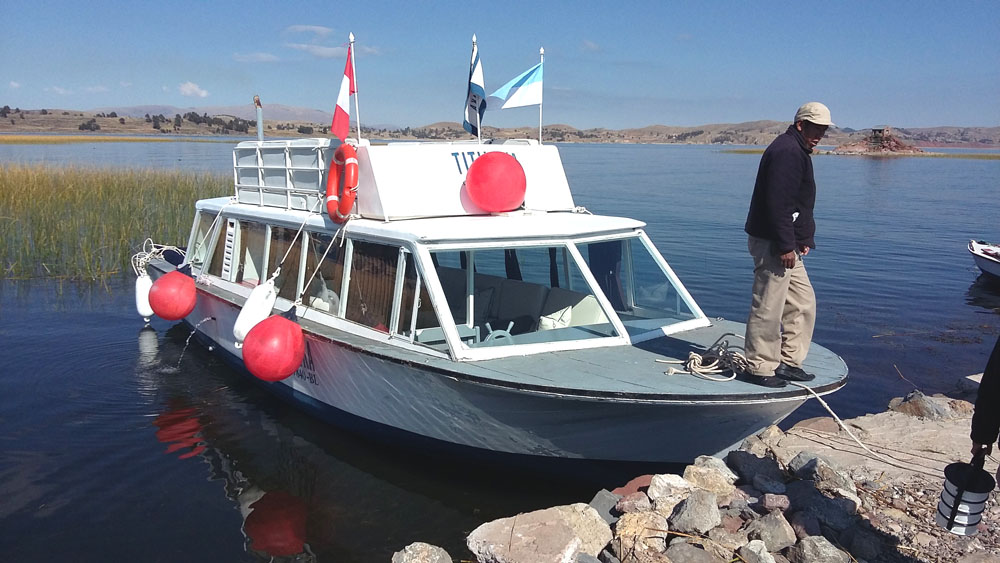
Our boat and guide on Lake Titicaca
The main attraction in the area is of course a visit to the lake and the islands within it. Most Puno hotels can arrange a trip out on the lake either on a small private basis or on one of the many shared boat excursions. Our hotel arranged a private boat for us (more about our hotel below) which was an excellent way to experience the lake.
We set off at 8am and headed towards the floating reed islands of the Uros. These are people who historically come from Oruro in Bolivia and for various reasons ended up making their home on the Uros Islands in Lake Titicaca. Most of the boats which depart from Puno tend to visit the larger and perhaps more commercial set of floating islands closer to Puno. Our hotel however has a special arrangement with one of the more remote Uros islands which enabled a far more intimate experience.
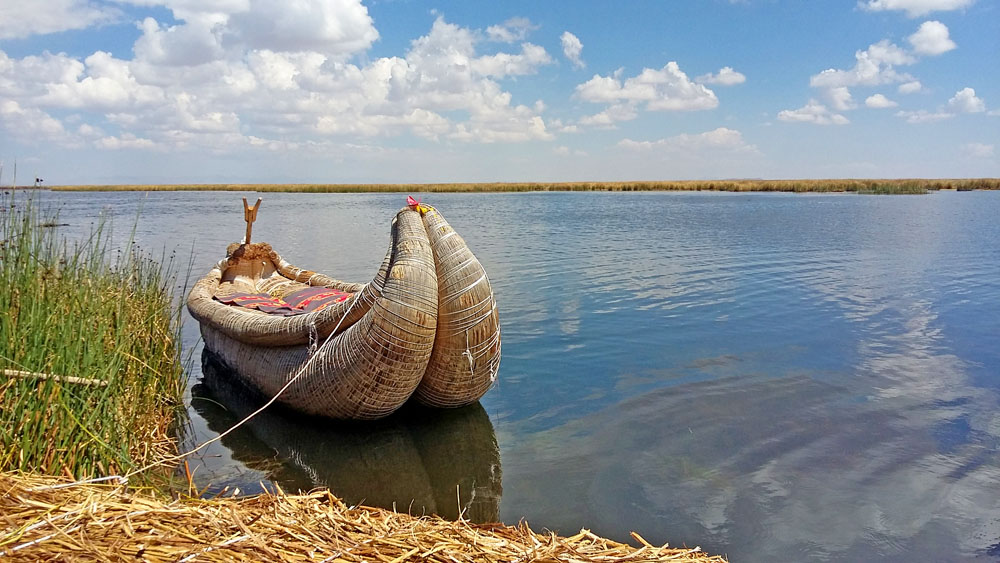
A classic boat of the reed islanders.
As we arrived at our island we were collected by a local man in his reed boat which is a fabulous construction made out of hundreds of plastic bottles to create buoyancy and encased in dried reeds which are harvested locally. The boatman showed us how they cut reeds, let us try the fleshy edible part (which was a bit like cucumber) and took us to their fishing nets, fish being the primary food source on the islanders.
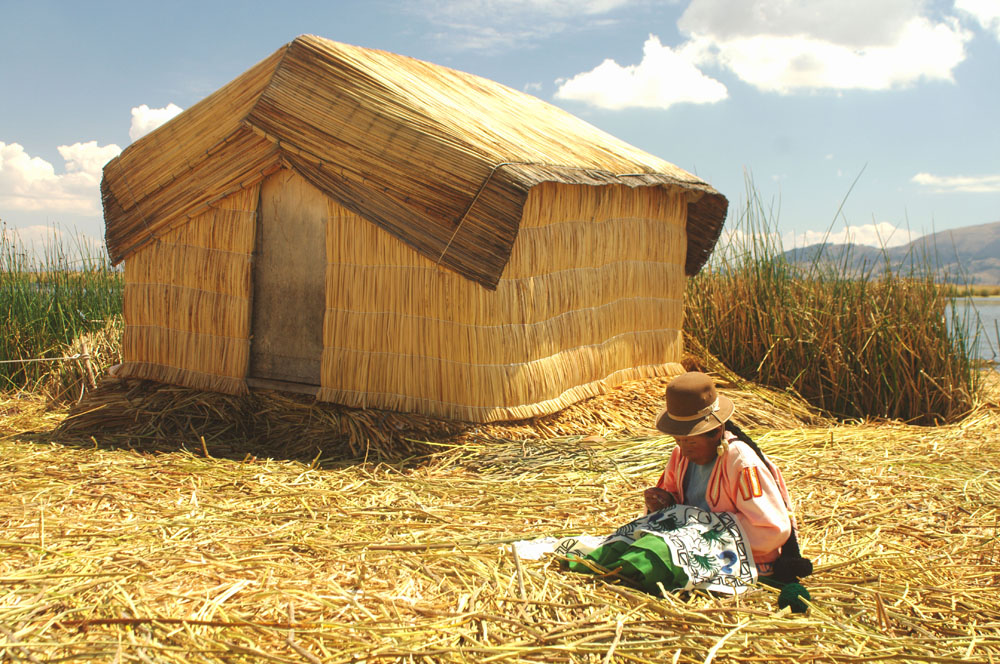
A resident of the islands sewing crafts which visitors are able to buy
We were then taken to the floating reed island and met the local inhabitants. On our particular island there were about 20 people living there in 5 huts. Life is very simple on the islands and conditions are basic with no beds as such, just blankets on the floor. There are solar panels on the island though enabling simple lighting and a black and white TV to watch those all-important La Liga fixtures featuring FC Barcelona! The children on the island speak Aymara whereas many of the adults know Spanish too. On the island we were shown a demonstration of how the islanders maintain the island as the reeds have to be regularly topped up to prevent the islands from sinking which was fascinating. We then had the chance to interact with some of the families including the very cute little children for whom we had brought pens and writing pads which they took eagerly from us.
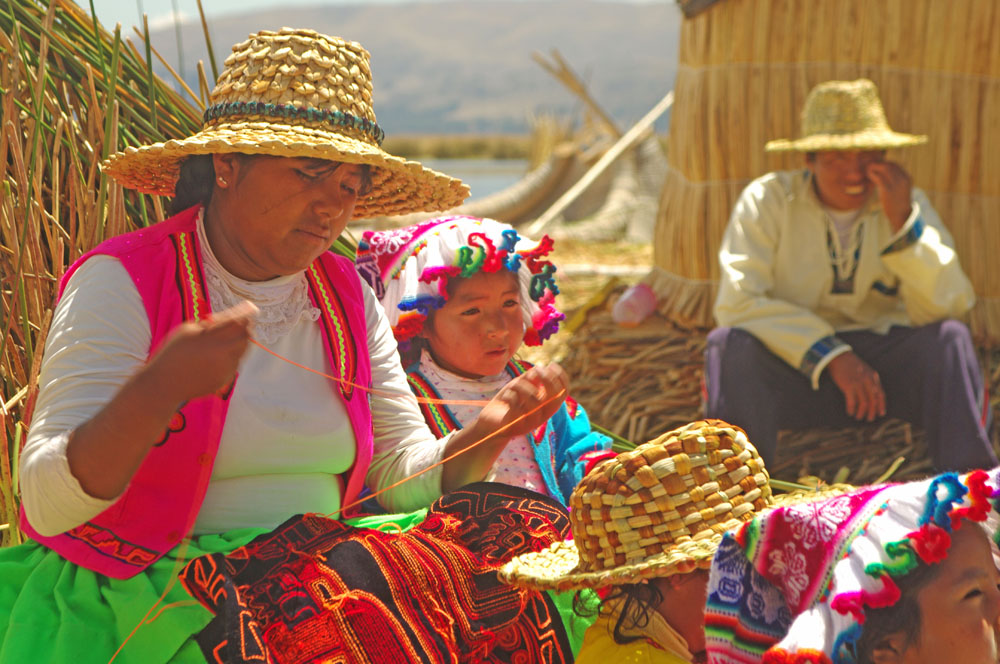
A mother and child in traditional dress on the islands.
We then left the Uros islands behind and headed to the 2nd most visited island of Lake Titicaca, Isla Taquile. The last time I visited here I stayed the night in a local homestay which was a lot of fun although this time it was just for a day visit. We trekked over the island to where our hotel had prepared a special lunch for us, away from all the other tourist boats which descend on the other side of Isla Taquile and here we learned lots of information and stories about life on the island before trekking down after lunch to board the boat back to our hotel.
There are many other islands in the lake which require more than a day trip but make sure you visit the Uros Islands and Isla Taquile if you visit Lake Titicaca as it’s a wonderful day trip and very photogenic.
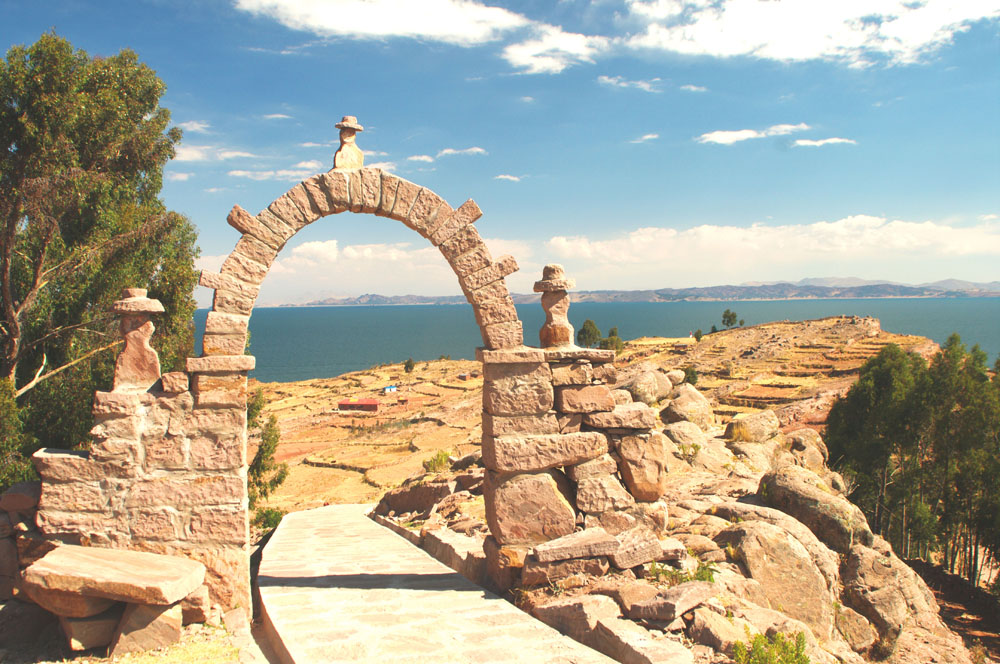
View from the high point of Taquile island.
Where to stay
In the town of Puno there are some good mid-range options for hotels, plus an excellent 4-star option, the Libertador but if you are looking for something special then head to Titilaka, which is by far the best option in the area. Located 45 minutes from Puno on the southern side of the lake heading towards Bolivia, this 5-star hotel is a Relais & Chateaux property set right on the shores of Lake Titicaca.
Titilaka arranges transfers from Puno or Juliaca airport and you are greeted by an English speaking guide with refreshing towels prior to boarding a minivan to the hotel. The minivan comes with blankets and most impressively, Wi-Fi.
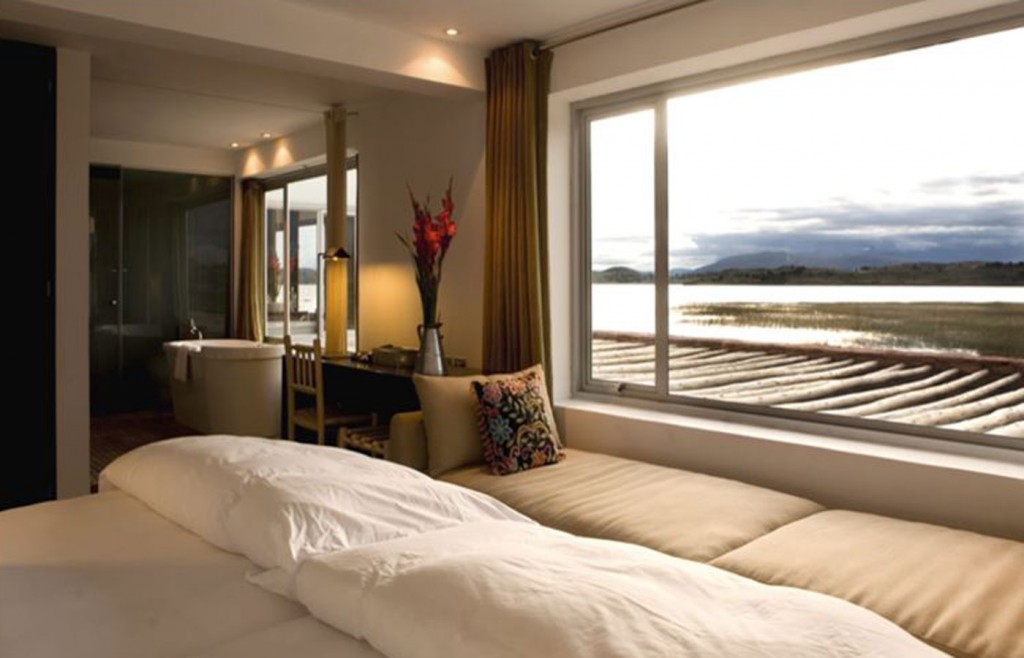
Example of a room in Titilaka
As you arrive at the hotel it is explained that everything is included which means meals, drinks (alcoholic and non-alcoholic), the mini-bar and activities, as well as afternoon tea and a cocktail hour (well, it’s 2 hours actually).
Check in takes place in your room which is swift and efficient and the rooms come with huge beds and fabulous views to Lake Titicaca.
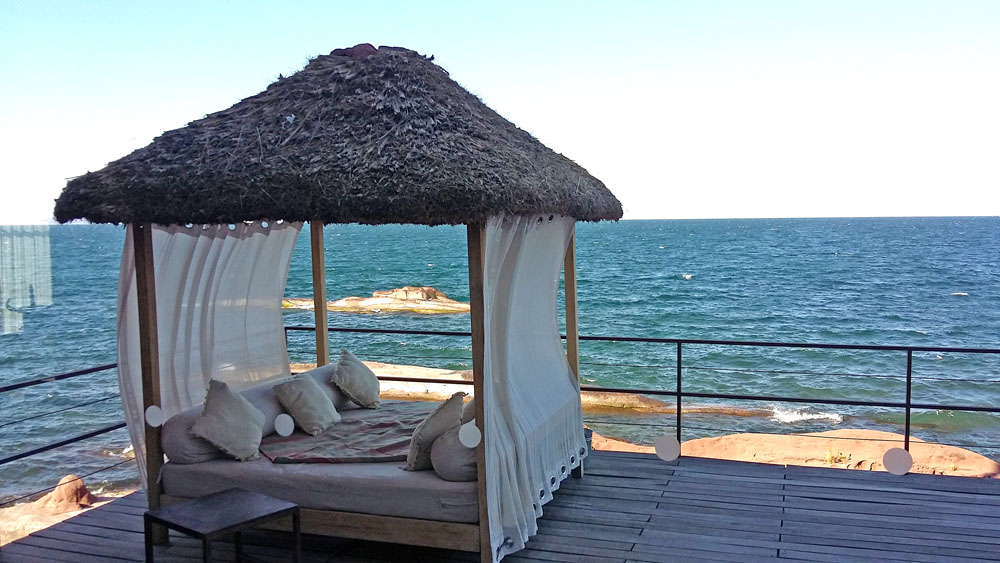
Outdoor relaxtion area at Titilaka, with a stunning view of Lake Titicaca.
There are a variety of tours and excursions included in your stay which range from tours of the lake through to the use of kayaks or Stand Up Paddle boards although I wouldn’t fancy very much falling in the lake as I suspect it’s pretty cold.
Breakfast is an unlimited buffet plus a la carte options whilst dinner is a 3 course meal with a range of wines to complement. You can also have the meals in your room.
The design of the hotel is immaculate so if you are visiting Lake Titicaca and are looking for a special place to stay, then stay at Titilaka, it’s wonderful.
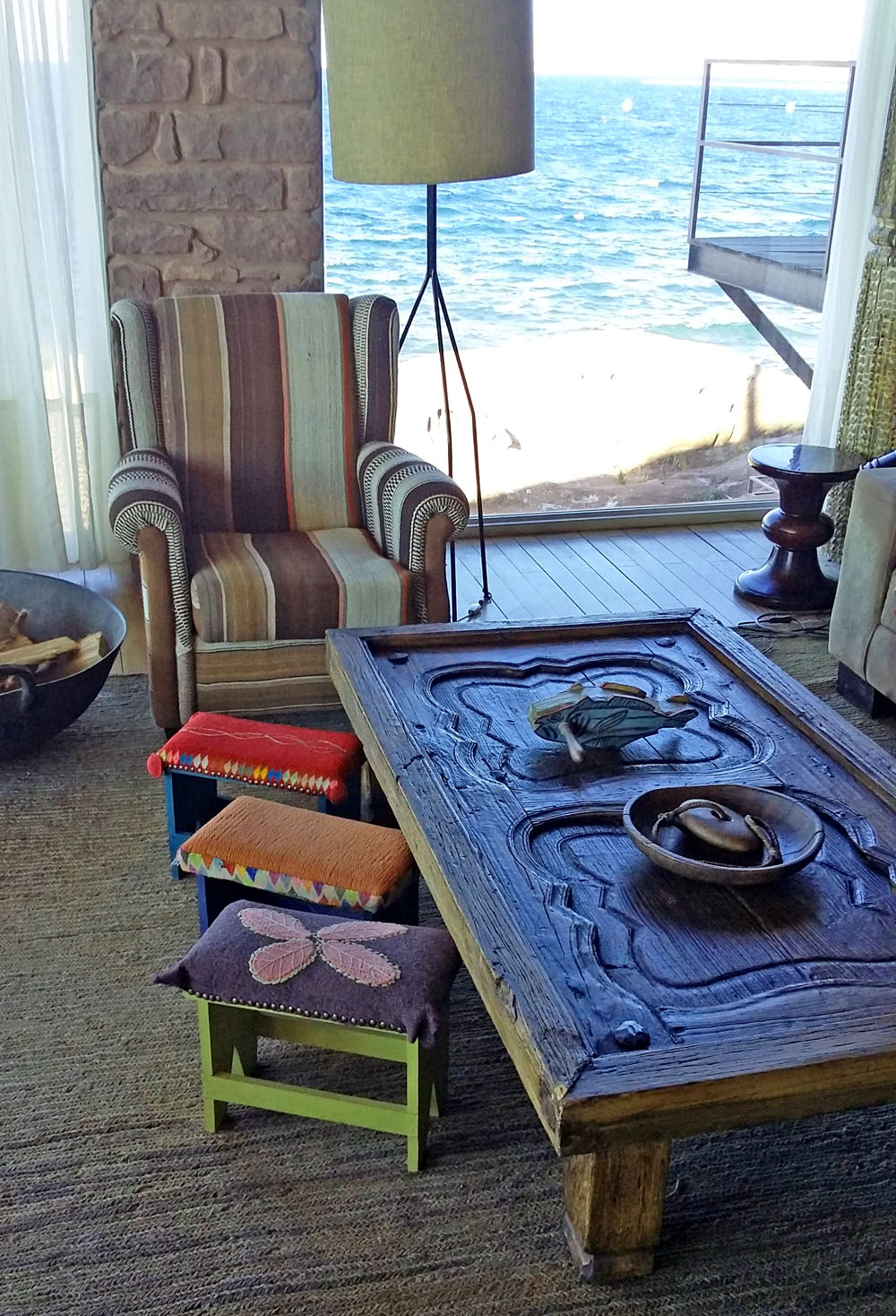
Traditional touches in the decor at Titilaka add to the luxury experience.


